We may get confused when two good mobiles fall under the nearby price. Here we are going to compare Samsung Galaxy S23 vs. OnePlus 11. this comparison will clear up all your confusion. The smartphone industry is in a constant state of change, with new phones launched frequently. Recently, two new models have arrived, the Samsung Galaxy S23 and the OnePlus 11. Both of these smartphones are highly anticipated and come packed with impressive features. This article will examine both phones closely, comparing their specs, features, and design. In this comparison, we’ll take a close look at both devices, comparing all their necessary specifications, including their body, display, camera, battery, software, and more, to help you determine which one is right for you.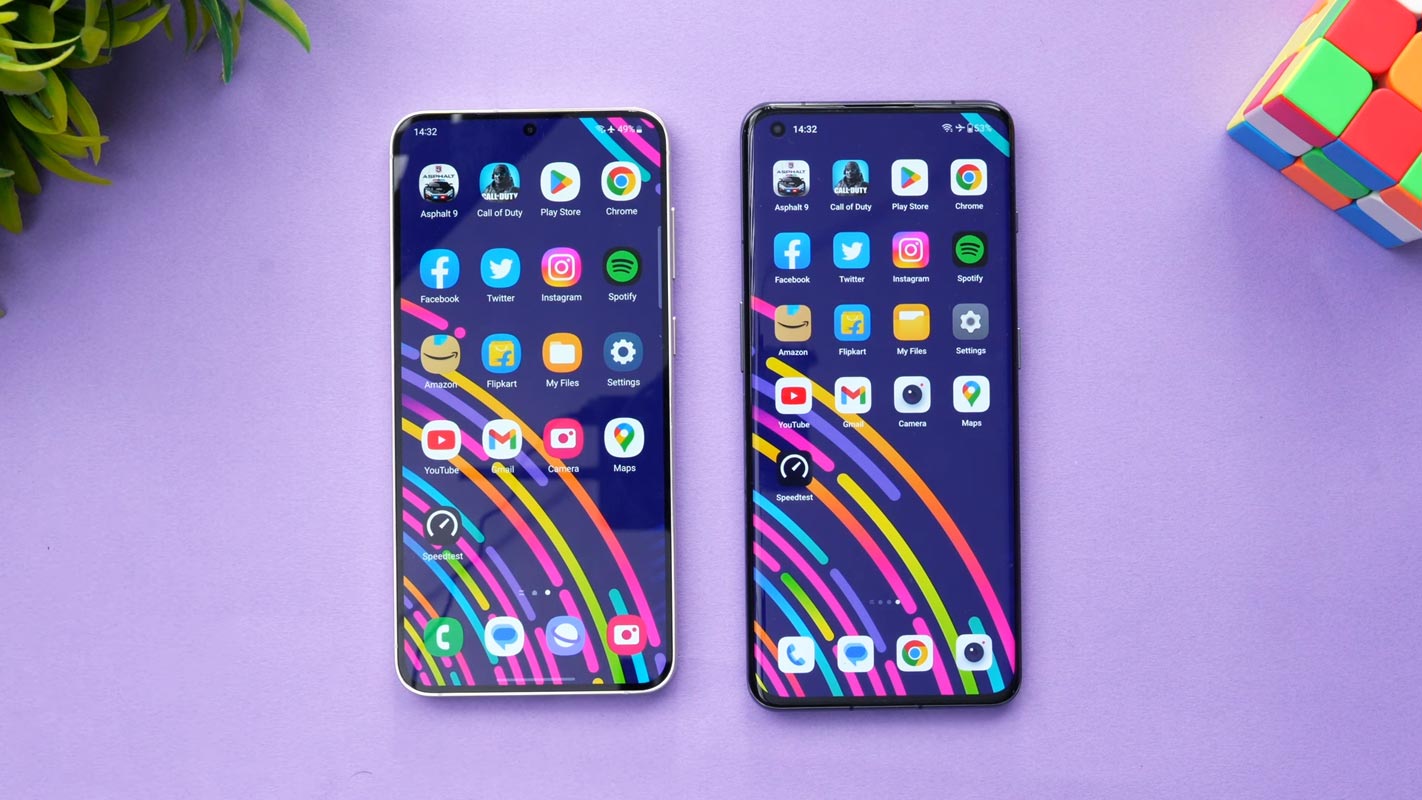
Samsung Galaxy S23 and OnePlus 11
2023 is poised to be an electrifying year in the smartphone industry, introducing two new phones from prominent brands – the Samsung Galaxy S23 and the OnePlus 11. Both devices have created a buzz in the market and are considered top-of-the-line smartphones that offer premium features, powerful hardware, and a unique experience. In this article, we will compare the Samsung Galaxy S23 and the OnePlus 11 to help you choose the device that best suits your needs.
Glimpse Comparision
The Samsung Galaxy S23 is a flagship device from the Korean tech giant that features a sleek design, high-end hardware, and a powerful camera system. The Samsung Galaxy S23 operates on Android 13, is equipped with the updated One UI 5.1 skin, and features a 6.1-inch Dynamic AMOLED 2X display with a fast refresh rate of 120Hz and a sharp resolution of 1080 x 2340 pixels.
Meanwhile, the OnePlus 11, a new offering from the Chinese smartphone maker, offers premium specifications at an economical price. The device operates on Android 13, complete with the latest OxygenOS 13, and boasts a 6.7-inch Fluid AMOLED screen with a pixel resolution of 1440 x 3216.
| Samsung Galaxy S23 | OnePlus 11 | ||
|---|---|---|---|
NETWORK |
Technology | GSM / CDMA / HSPA / EVDO / LTE / 5G | GSM / CDMA / HSPA / EVDO / LTE / 5G |
LAUNCH |
Announced | 2023, February 01 | 2023, January 04 |
| Status | Coming soon. Exp. release 2023, February 17 | Available. Released 2023, January 09 | |
BODY |
Dimensions | 146.3 x 70.9 x 7.6 mm (5.76 x 2.79 x 0.30 in) | 163.1 x 74.1 x 8.5 mm (6.42 x 2.92 x 0.33 in) |
| Weight | 168 g (5.93 oz) | 205 g (7.23 oz) | |
| Build | Glass front (Gorilla Glass Victus 2), glass back (Gorilla Glass Victus 2), aluminum frame | Glass front (Gorilla Glass Victus), glass back (Gorilla Glass 5), aluminum frame | |
| SIM | Nano-SIM and eSIM or Dual SIM (2 Nano-SIMs and eSIM, dual stand-by) | Single SIM (Nano-SIM) or Dual SIM (Nano-SIM, dual stand-by) | |
| IP68 dust/water resistant (up to 1.5m for 30 mins) | IP64 | ||
| Armor aluminum frame with more challenging drop and scratch resistance (advertised) | |||
DISPLAY |
Type | Dynamic AMOLED 2X, 120Hz, HDR10+, 1750 nits (peak) | LTPO3 Fluid AMOLED, 1B colors, 120Hz, Dolby Vision, HDR10+, 500 nits (typ), 800 nits (HBM), 1300 nits (peak) |
| Size | 6.1 inches, 90.1 cm2 (~86.8% screen-to-body ratio) | 6.7 inches, 108.4 cm2 (~89.7% screen-to-body ratio) | |
| Resolution | 1080 x 2340 pixels, 19.5:9 ratio (~425 ppi density) | 1440 x 3216 pixels, 20:9 ratio (~525 ppi density) | |
| Protection | Corning Gorilla Glass Victus 2 | Corning Gorilla Glass Victus | |
| Always-on display | Always-on display | ||
PLATFORM |
OS | Android 13, One UI 5.1 | Android 13, OxygenOS 13 (International), ColorOS 13 (China) |
| Chipset | Qualcomm SM8550-AC Snapdragon 8 Gen 2 (4 nm) | Qualcomm SM8550-AB Snapdragon 8 Gen 2 (4 nm) | |
| CPU | Octa-core (1×3.36 GHz Cortex-X3 & 2×2.8 GHz Cortex-A715 & 2×2.8 GHz Cortex-A710 & 3×2.0 GHz Cortex-A510) | Octa-core (1×3.2 GHz Cortex-X3 & 2×2.8 GHz Cortex-A715 & 2×2.8 GHz Cortex-A710 & 3×2.0 GHz Cortex-A510) | |
| GPU | Adreno 740 | Adreno 740 | |
MEMORY |
Card slot | No | No |
| Internal | 128GB 8GB RAM, 256GB 8GB RAM, 512GB 8GB RAM | 128GB 8GB RAM, 256GB 12GB RAM, 256GB 16GB RAM, 512GB 16GB RAM | |
| UFS 3.1 – 128GB only | UFS 3.1 – 128GB only | ||
| UFS 4.0 | UFS 4.0 | ||
MAIN CAMERA |
Modules | 50 MP, f/1.8, 24mm (wide), 1/1.56″, 1.0µm, Dual Pixel PDAF, OIS | 50 MP, f/1.8, 24mm (wide), 1/1.56″, 1.0µm, multi-directional PDAF, OIS |
| 10 MP, f/2.4, 70mm (telephoto), 1/3.94″, 1.0µm, PDAF, OIS, 3x optical zoom | 32 MP, f/2.0, 48mm (telephoto), 1/2.74″, PDAF, 2x optical zoom | ||
| 12 MP, f/2.2, 13mm, 120˚ (ultrawide), 1/2.55″ 1.4µm, Super Steady video | 48 MP, f/2.2, 115˚, (ultrawide), 1/2.0″, AF | ||
| Features | LED flash, auto-HDR, panorama | Hasselblad Color Calibration, Dual-LED flash, HDR, panorama | |
| Video | 8K@24/30fps, 4K@30/60fps, 1080p@30/60/240fps, 1080p@960fps, HDR10+, stereo sound rec., gyro-EIS | 8K@24fps, 4K@30/60fps, 1080p@30/60/240fps, Auto HDR, gyro-EIS | |
SELFIE CAMERA |
Modules | 12 MP, f/2.2, 26mm (wide), Dual Pixel PDAF | 16 MP, f/2.5, 25mm (wide), 1.0µm |
| Features | Dual video call, Auto-HDR, HDR10+ | Auto-HDR, panorama | |
| Video | 4K@30/60fps, 1080p@30fps | 1080p@30fps, gyro-EIS | |
SOUND |
Loudspeaker | Yes, with stereo speakers | Yes, with stereo speakers |
| 3.5mm jack | No | No | |
| 32-bit/384kHz audio | 24-bit/192kHz audio | ||
| Tuned by AKG | |||
COMMS |
WLAN | Wi-Fi 802.11 a/b/g/n/ac/6e, tri-band, Wi-Fi Direct | Wi-Fi 802.11 a/b/g/n/ac/6/7, dual-band, Wi-Fi Direct |
| Bluetooth | 5.3, A2DP, LE | 5.3, A2DP, LE, apt-X HD | |
| Positioning | GPS, GLONASS, BDS, GALILEO | GPS (L1+L5), GLONASS (G1), BDS (B1I+B1c+B2a), GALILEO (E1+E5a), QZSS (L1+L5) | |
| NFC | Yes | Yes, eSE, HCE | |
| Infrared port | No | No | |
| Radio | No | No | |
| USB | USB Type-C 3.2, OTG | USB Type-C 2.0, OTG | |
FEATURES |
Sensors | Fingerprint (under the display, ultrasonic), accelerometer, gyro, proximity, compass, barometer | Fingerprint (under display, optical), accelerometer, gyro, proximity, compass, color spectrum |
| Samsung DeX, Samsung Wireless DeX (desktop experience support) | |||
| Bixby’s natural language commands and dictation | |||
| Samsung Pay (Visa, MasterCard certified) | |||
BATTERY |
Type | Li-Ion 3900 mAh, non-removable | Li-Po 5000 mAh, non-removable |
| Charging | 25W wired, PD3.0, 50% in 30 min (advertised) | 100W wired, PD, 1-50% in 10 min, 1-100% in 25 min (advertised) – International | |
| 15W wireless (Qi/PMA) | 80W wired, PD – USA, IN | ||
| 4.5W reverse wireless | |||
| Stand-by | |||
| Talk time | |||
MISC |
|||
| Colors | Phantom Black, Cream, Green, Lavender, Graphite, Lime | Titan Black, Eternal Green | |
| SAR | 0.95 W/kg (head) 0.88 W/kg (body) | ||
| SAR EU | 0.96 W/kg (head) 1.30 W/kg (body) | ||
| Models | SM-S911B, SM-S911B/DS, SM-S911U, SM-S911U1, SM-S911W, SM-S911N, SM-S9110, SM-S911E, SM-S911E/DS | PBH110 | |
| Price | ₹ 79,998 / $ 799.99 / £ 849.00 / € 949.00 | ₹ 56,999 / $ 699.99 / £ 729.00 / € 829.00 | |
TESTS |
Performance | AnTuTu: 1231075 (v9) | AnTuTu: 1140661 (v9) |
| GeekBench: 4950 (v5.1) | GeekBench: 4899 (v5.1) | ||
| GFXBench: 110fps (ES 3.1 onscreen) | GFXBench: 57fps (ES 3.1 onscreen) | ||
| Display | Contrast ratio: Infinite (nominal) | Contrast ratio: Infinite (nominal) | |
| Loudspeaker | -27.0 LUFS (Good) | -25.2 LUFS (Very good) | |
| Battery life | 101h endurance rating | 108h endurance rating |
Network
Regarding network connectivity, the Samsung Galaxy S23 and the OnePlus 11 support 5G, but the Samsung device also supports CDMA and EVDO networks.
Body
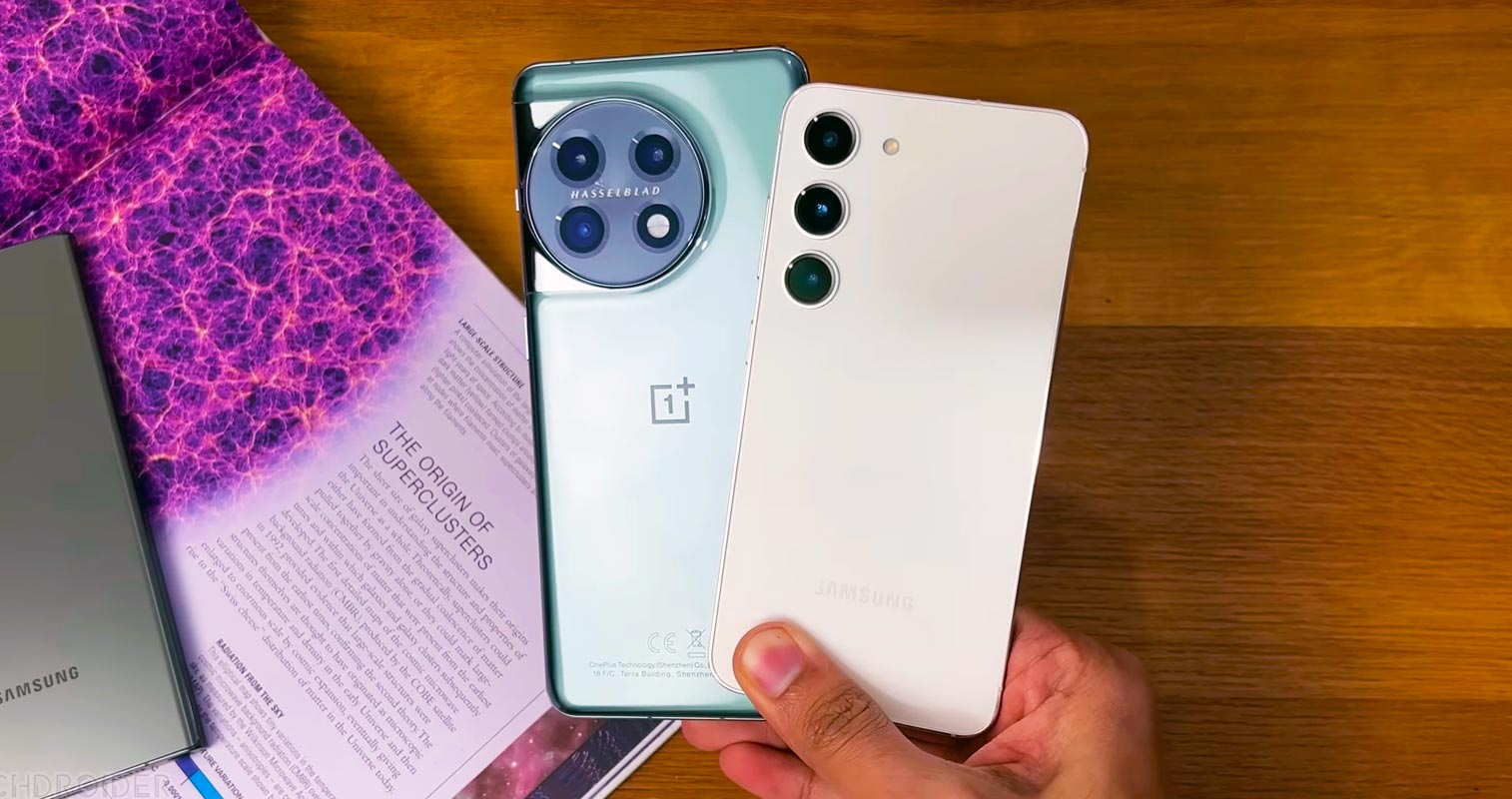
The Samsung Galaxy S23 measures 146.3 x 70.9 x 7.6 mm and weighs 168 g, whereas the OnePlus 11, slightly larger in size and weight, measures 163.1 x 74.1 x 8.5 mm and weighs 205 g. The Samsung Galaxy S23 boasts a glass front and back with an aluminum frame and is IP68 rated for protection against dust and water. At the same time, the OnePlus 11 has a more durable armor aluminum frame, offering enhanced resistance to drops and scratches.
Display
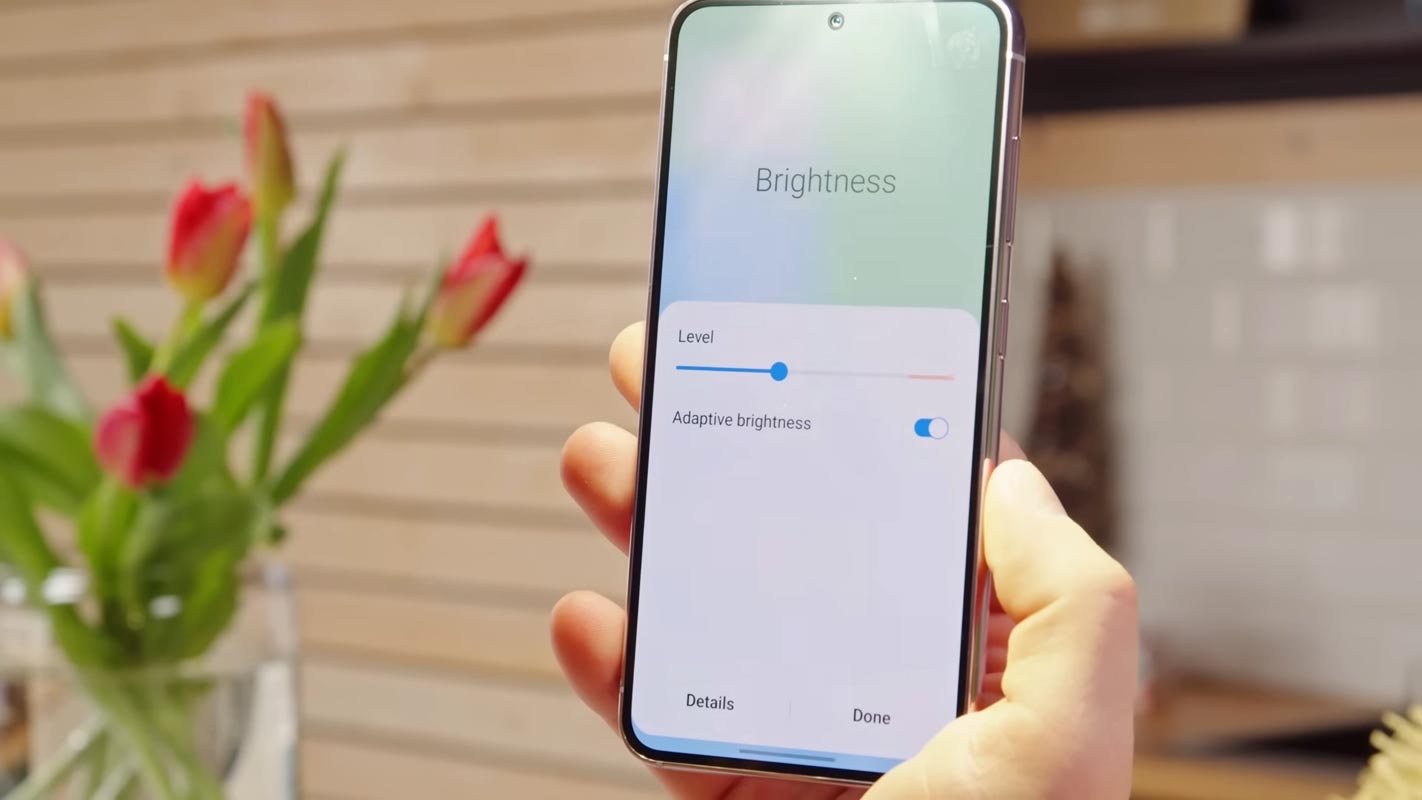
In terms of displays, the Samsung Galaxy S23 has a larger 6.1-inch Dynamic AMOLED 2X collection with a higher peak brightness of 1750 nits compared to the 6.7-inch Fluid AMOLED display.
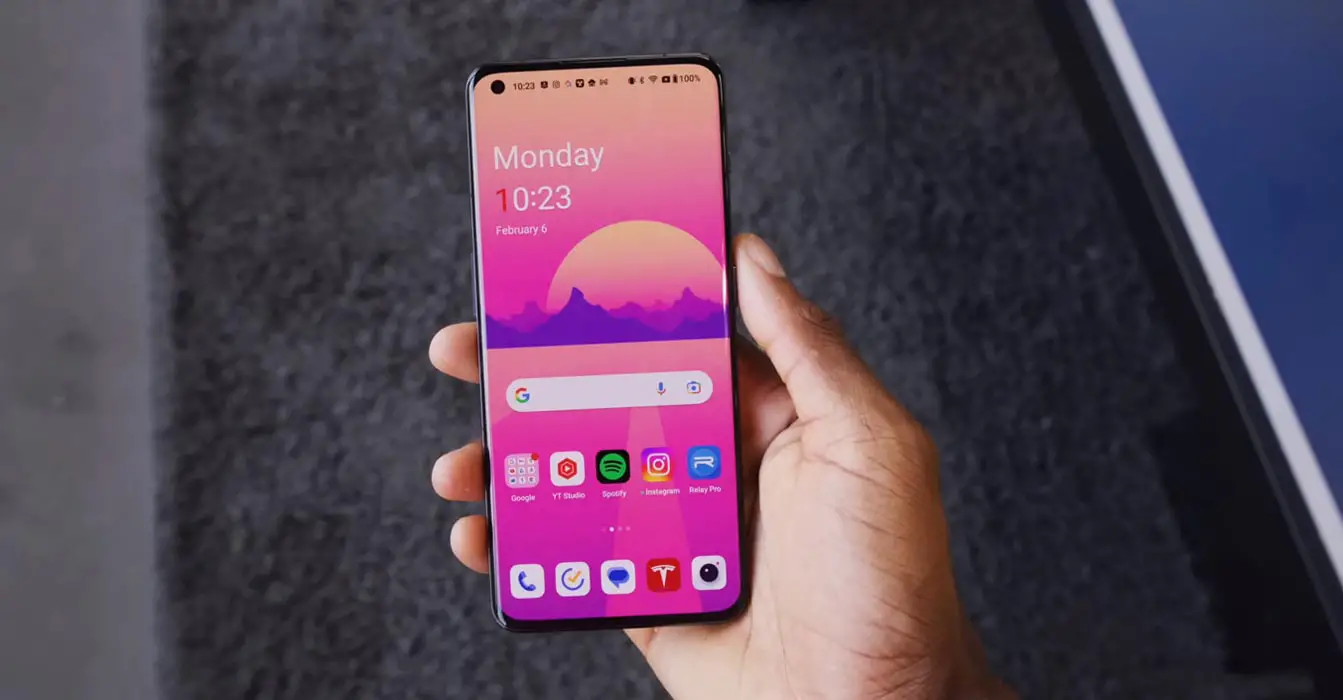
The OnePlus 11 has a peak brightness of 1300 nits. The Samsung device also supports HDR10+ and has a higher resolution of 1080 x 2340 pixels, while the OnePlus 11 has a resolution of 1440 x 3216 pixels.
Processor, RAM, and Storage
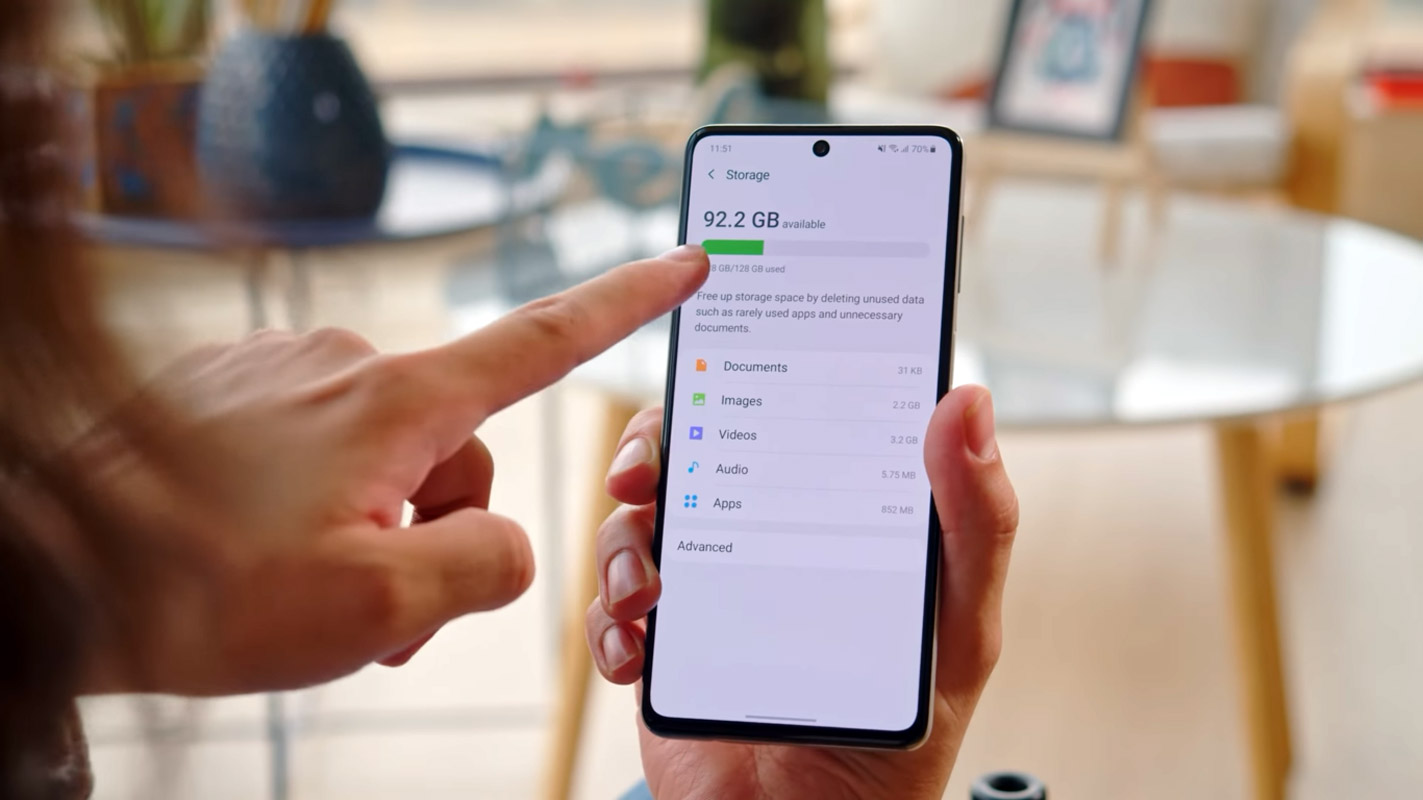
Regarding the hardware, both devices are powered by the latest Snapdragon 8 processors, with the Samsung Galaxy S23 powered by the Snapdragon 8 Gen 2 chipset and the OnePlus 11 powered by the Snapdragon 8 Gen 2 chipset.
The Samsung Galaxy S23 is available in 128GB 8GB RAM, 256GB 8GB RAM, and 512GB 8GB RAM configurations, while the OnePlus 11 is available in 128GB 8GB RAM and 256GB 16GB RAM configurations.
Camera
The camera systems on both devices are top-of-the-line, with the Samsung Galaxy S23 featuring a triple camera system with a 50 MP primary camera, a 10 MP telephoto camera, and a 12 MP ultrawide camera. The OnePlus 11 has a dual camera system with a 50 MP primary camera and a 48 MP ultrawide camera. Both devices also have high-resolution selfie cameras, with the Samsung Galaxy S23 featuring a 12 MP front-facing camera and the OnePlus 11 featuring a 16 MP front-facing camera.
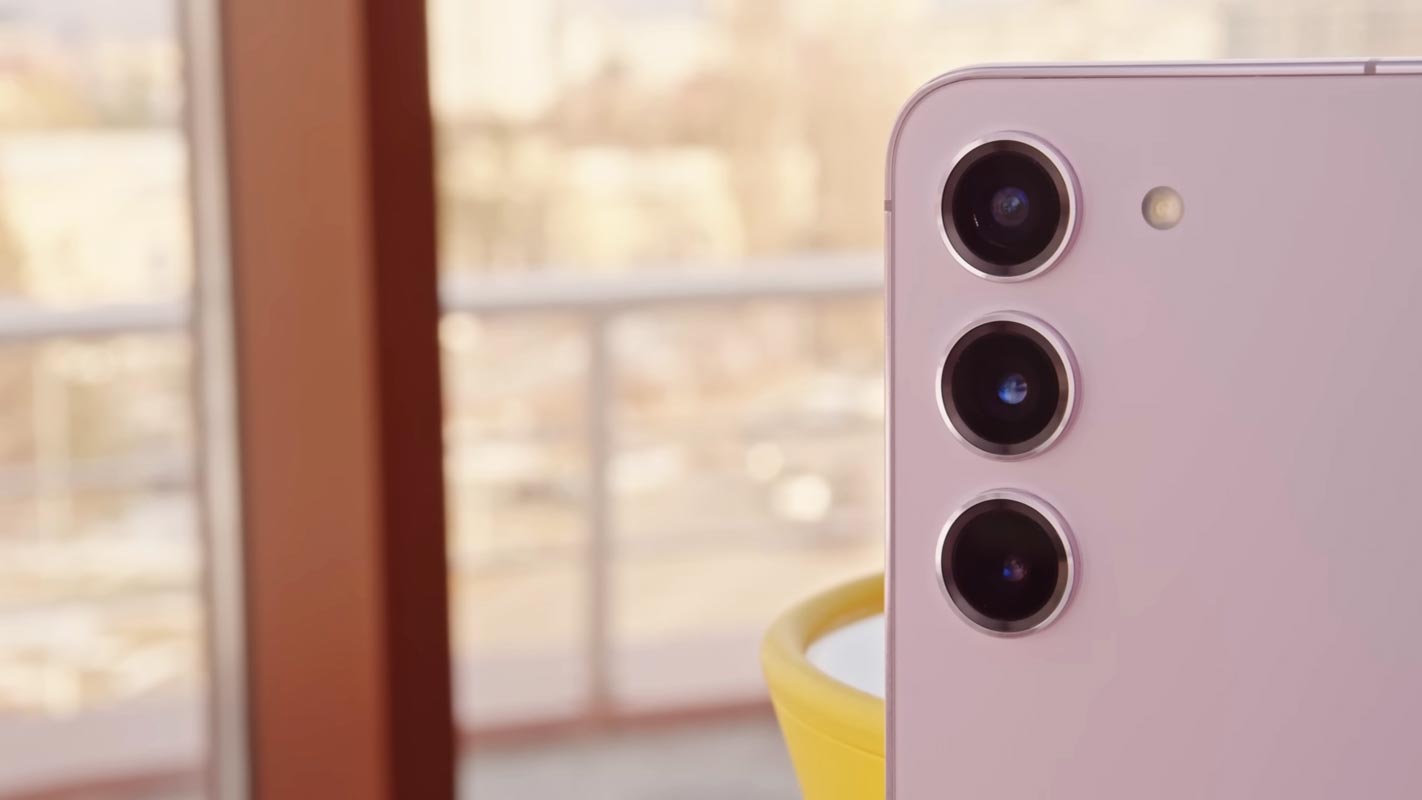
The Samsung Galaxy S23 boasts a powerful camera system with three rear camera modules – a 50MP primary camera, a 10MP telephoto camera, and a 12MP ultrawide camera. The primary camera features a large sensor and a wide aperture, providing high-quality images with excellent detail and sharpness. The telephoto camera offers 3x optical zoom, and the ultrawide camera provides a 120-degree field of view, making it ideal for capturing vast landscapes and group photos.
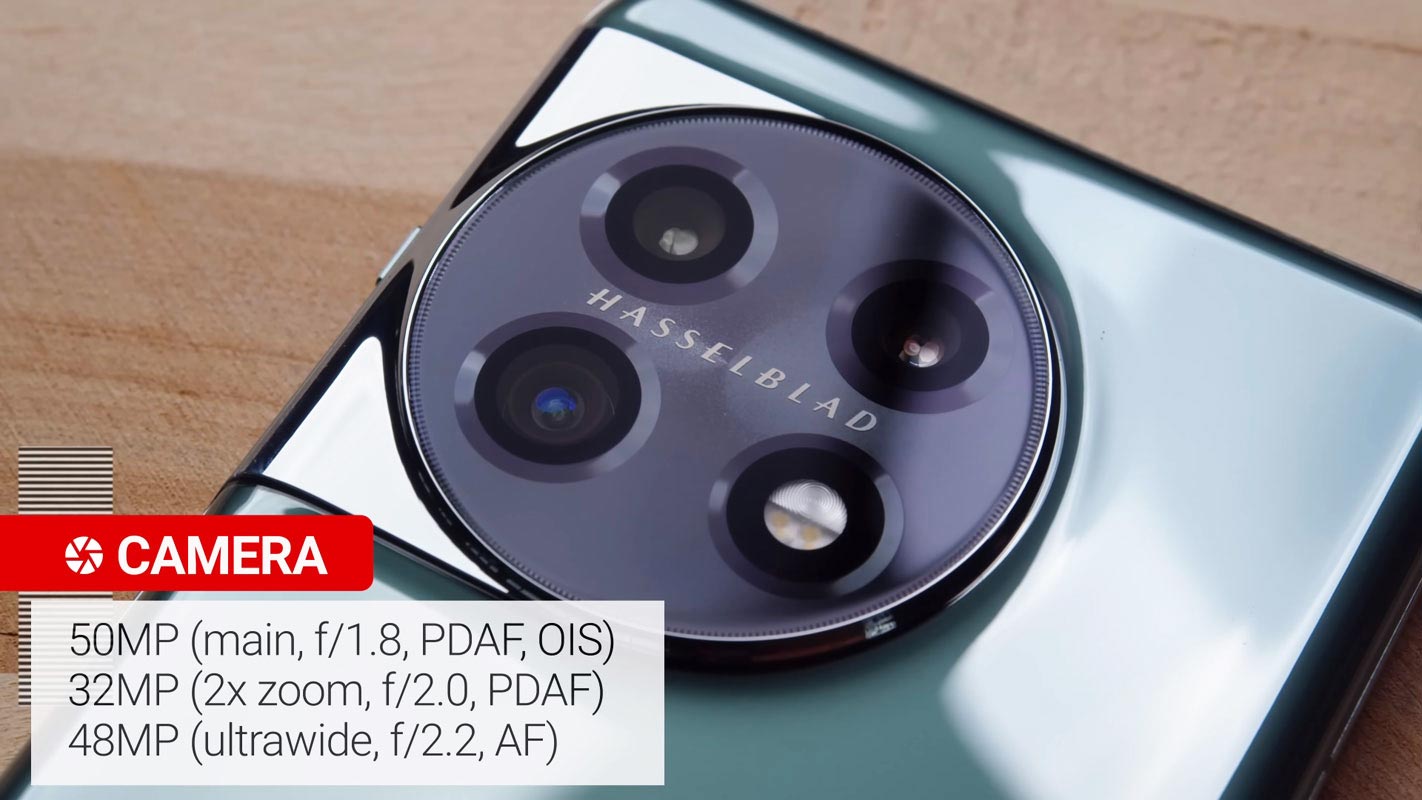
The OnePlus 11 also has a triple camera system, with a 50MP primary camera, a 48MP ultrawide camera, and a 2MP macro camera. The primary camera has a large sensor and a wide aperture, providing high-quality images with good detail and sharpness. The ultrawide camera offers a 115-degree field of view, while the macro camera is ideal for close-up shots.
Battery Life and Charging
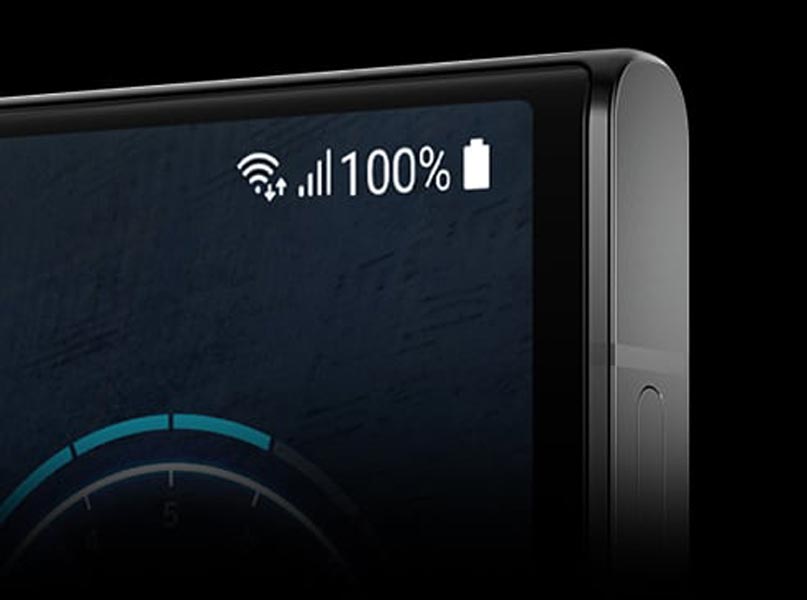
Samsung has implemented a new power-saving technology, which optimizes battery life and reduces power consumption. The Samsung Galaxy S23 has a built-in 3,900mAh battery and supports fast charging, which provides about 50% battery life in 30 minutes. The Galaxy S23 is equipped with both wireless charging and reverse wireless charging capabilities, enabling users to charge other wireless devices with the phone’s battery.
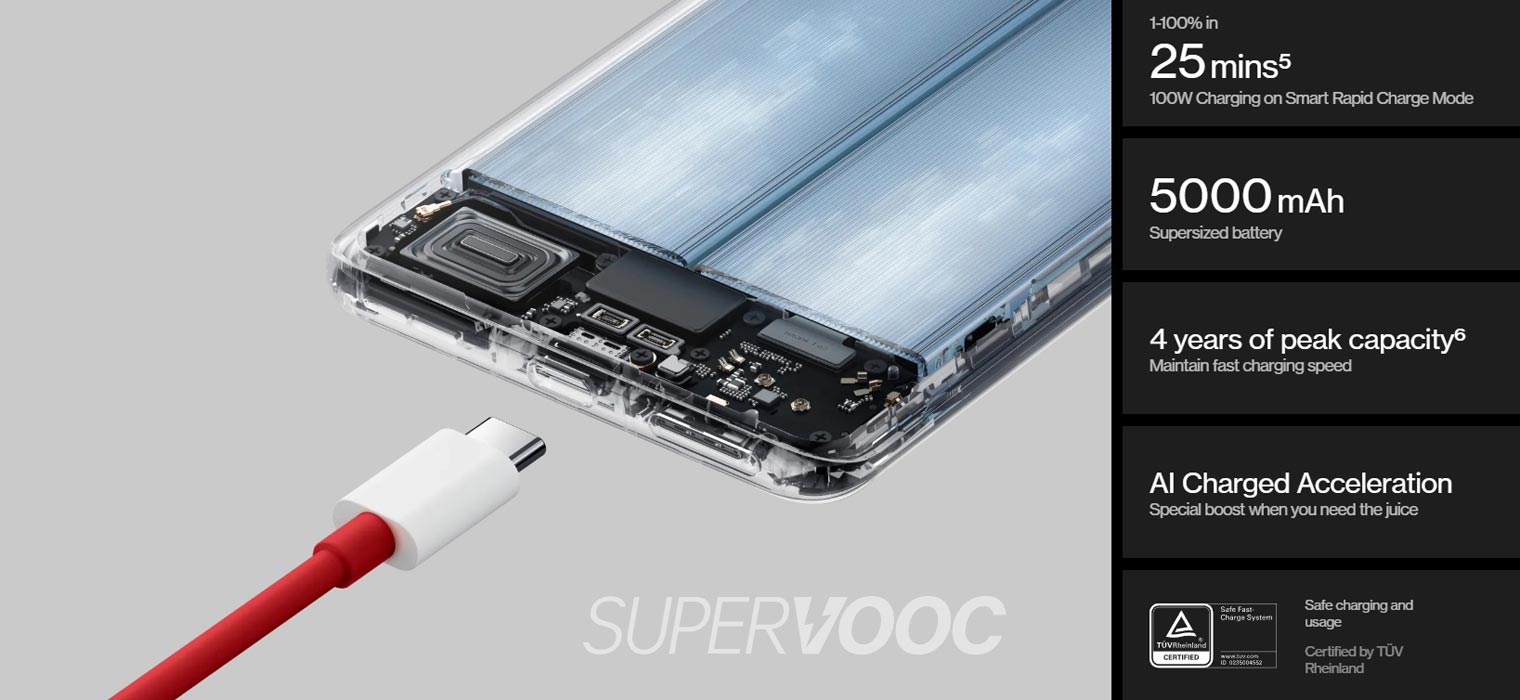
On the other hand, the OnePlus 11 has a built-in 5,000mAh battery and supports the latest Warp Charge 65T fast charging technology. It provides 50% battery life in just 10 minutes, significantly improving over previous models. The 11 is equipped with both wireless charging and reverse wireless charging functions, permitting users to recharge other devices utilizing the phone’s battery.
Software and User Experience
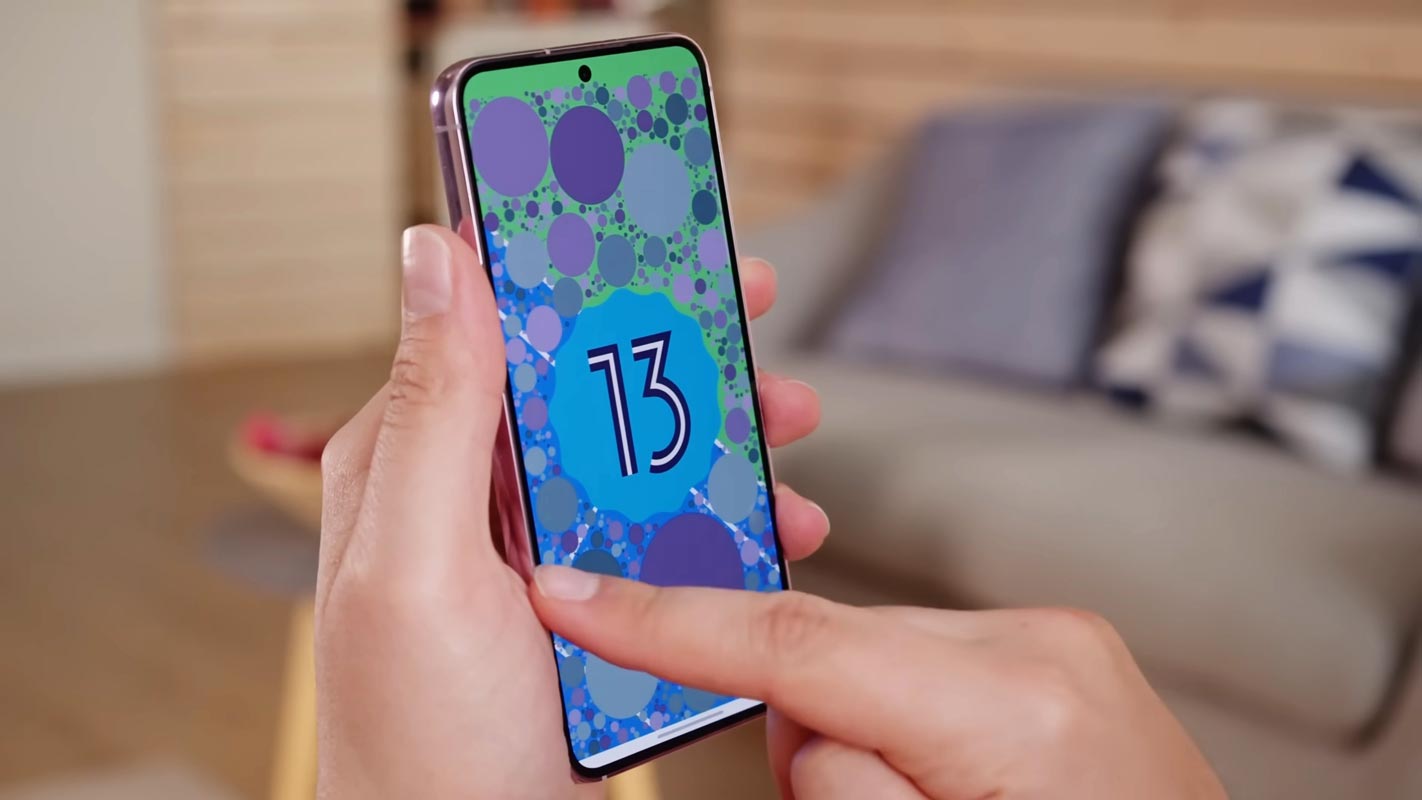
Both Samsung Galaxy S23 and OnePlus 11 run on the latest version of the Android operating system, Android 13. Samsung’s Galaxy S23 uses the One UI 5.1, known for its customization options and intuitive user experience. One UI 5.1 allows users to create custom themes, set their icons, and change the home screen’s appearance, among other things.
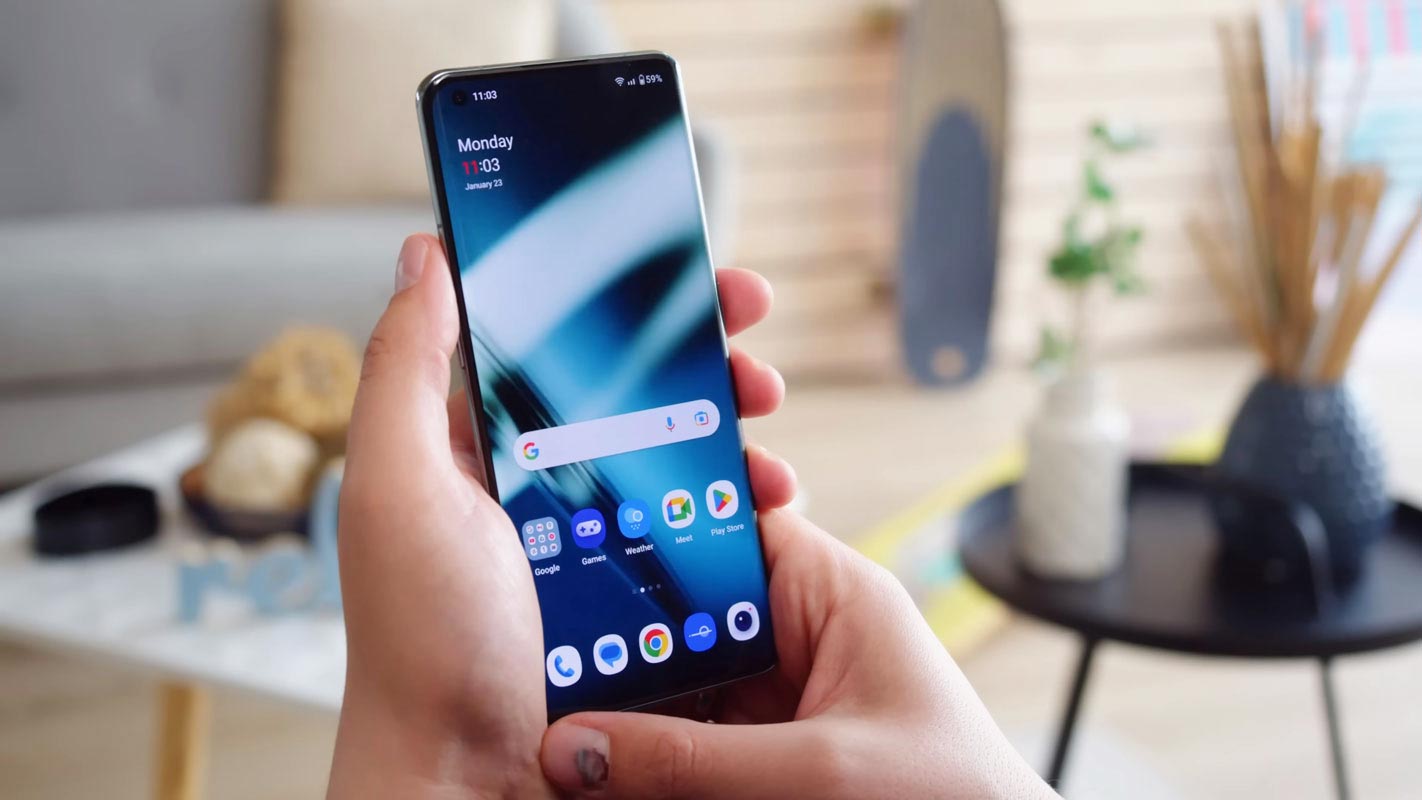
The OnePlus 11 runs on OxygenOS 13, designed to provide a smooth and fast user experience. OxygenOS 13 has a clean and minimal design, focusing on speed and simplicity. It offers a range of customization options and advanced features, including an always-on display and quick toggles for frequently used settings.
Conclusion
The Samsung Galaxy S23 and OnePlus 11 are robust and feature-rich smartphones offering excellent value for money. The Galaxy S23 has a larger and more advanced display, with a higher refresh rate and a more powerful processor. On the other hand, the OnePlus 11 has a longer battery life and faster charging technology.
Ultimately, the choice between these two phones comes down to personal preferences and needs. The Samsung Galaxy S23 is a good choice for those who prioritize screen size and display quality, while the OnePlus 11 is a good choice for those who prioritize battery life and charging speed. Both phones offer a high-quality user experience and advanced camera systems, making them ideal for photography enthusiasts.

Selva Ganesh is the Chief Editor of this Blog. He is a Computer Science Engineer, An experienced Android Developer, Professional Blogger with 8+ years in the field. He completed courses about Google News Initiative. He runs Android Infotech which offers Problem Solving Articles around the globe.



Leave a Reply